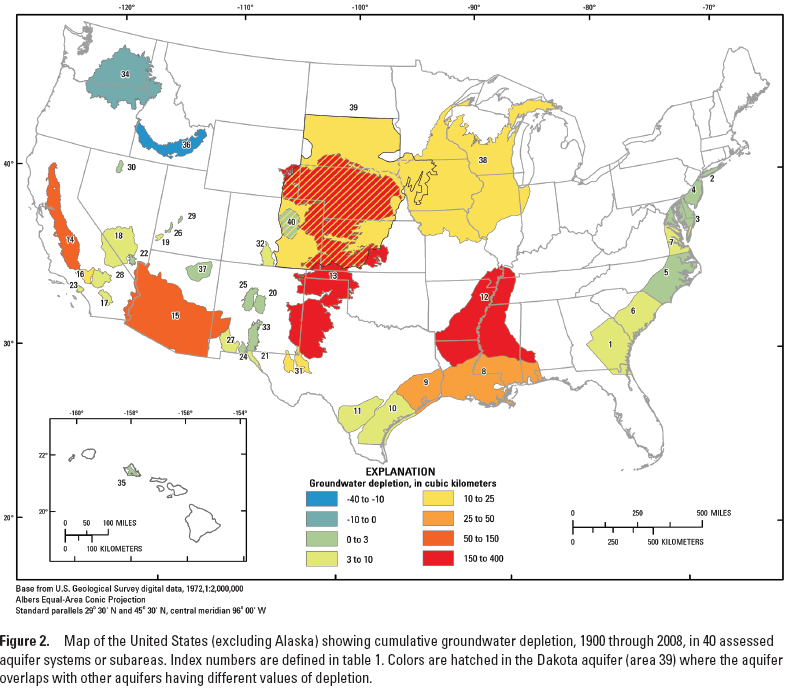Environment & Energy
Related: About this forumAreas that depend on aquifers for their water supply, including, but not limited to, KS, what
happens when the aquifer runs out? Has this already happened anywhere in the world?
DK504
(3,847 posts)As Houston and its surrounds got 50 in. of rain and Florida was under water as well, we are unable to figure out infrastructure for water transportation across the country would make our country better protected and more profitable.
Our country is becoming a desert and no efforts are made to replenish water supplies in normally green areas of the country.
NeoGreen
(4,031 posts)Groundwater Depletion
https://water.usgs.gov/edu/gwdepletion.html

Water-Level Changes and Change in Water in Storage in the High Plains Aquifer, Predevelopment to 2013 and 2011–13
By Virginia L. McGuire
https://pubs.usgs.gov/sir/2014/5218/
The High Plains aquifer underlies 111.8 million acres (about 175,000 square miles) in parts of eight States—Colorado, Kansas, Nebraska, New Mexico, Oklahoma, South Dakota, Texas, and Wyoming. Water-level declines began in parts of the High Plains aquifer soon after the beginning of substantial irrigation with groundwater in the aquifer area (about 1950). This report presents water-level changes in the High Plains aquifer from predevelopment (generally before 1950) to 2013 and from 2011 to 2013. The report also presents change in water in storage in the High Plains aquifer from predevelopment to 2013 and from 2011 to 2013.
The methods to calculate area-weighted, average water-level changes; change in water in storage; and total water in storage for this report used geospatial data layers organized as rasters with a cell size of 500 meters by 500 meters, which is an area of about 62 acres. These methods were used to provide a raster dataset of water-level changes for other uses.
Water-level changes from predevelopment to 2013, by well, ranged from a rise of 85 feet to a decline of 256 feet. Water-level changes from 2011 to 2013, by well, ranged from a rise of 19 feet to a decline of 44 feet. The area-weighted, average water-level changes in the aquifer were an overall decline of 15.4 feet from predevelopment to 2013, and a decline of 2.1 feet from 2011 to 2013. Total water in storage in the aquifer in 2013 was about 2.92 billion acre-feet, which was a decline of about 266.7 million acre-feet since predevelopment and a decline of 36.0 million acre-feet from 2011 to 2013.

hatrack
(59,583 posts). . . as well in some areas of NM and TX where the aquifer wasn't that deep to begin with.

The water isn't going to run out all at once across the plains - too much variability in depth from state to state and from county to county. However, there are some areas in the states mentioned above where landowners have had to go dryland (and hope for the best), convert farmland to ranchland, or fallow.
Ironically, there's a reasonably good case for reversion to natural habitat in some locations. Renting out hunting land has become a fairly significant source of income in some counties, particularly with commodity prices dropping for the past few years.
Really good book on the topic called "Ogallala Blue" by William Ashworth.